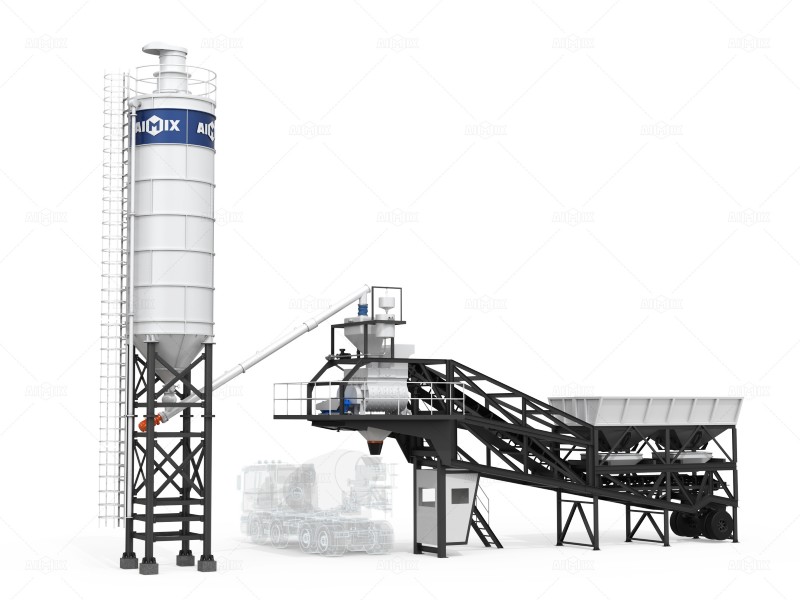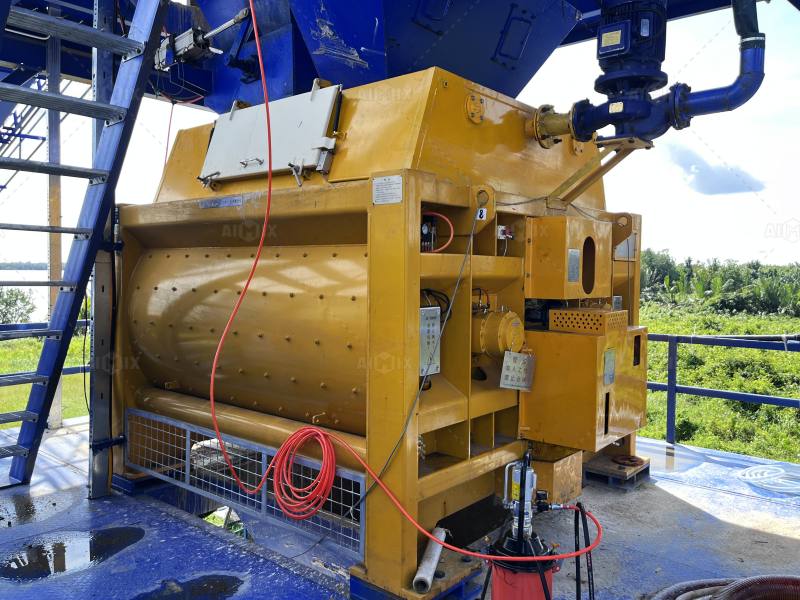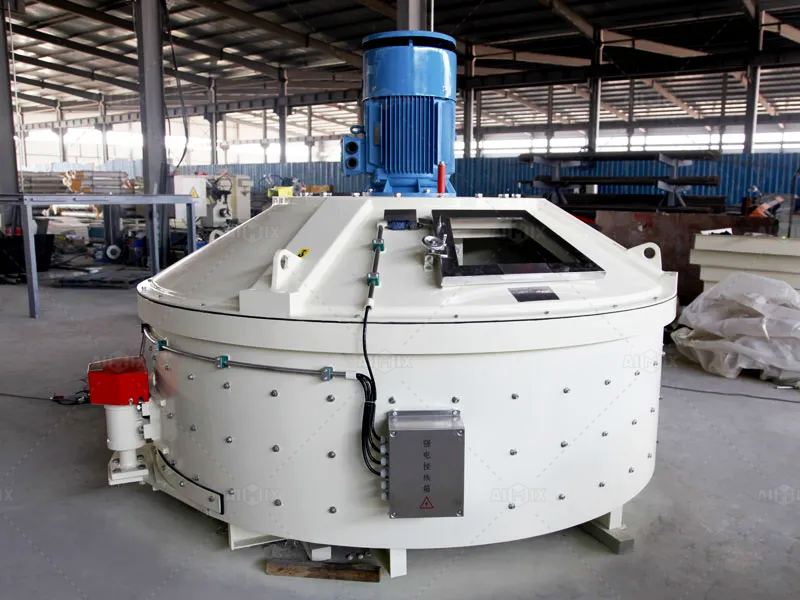How to start RMC plant with low risk and high profit? Setting up a ready mix concrete plant needs careful planning, including budgeting, choosing the right plant type, and managing daily operations. A well-planned setup ensures smooth production, less downtime, and consistent concrete quality. This guide walks you through the key steps to help your RMC plant run efficiently and turn your investment into a successful business.

Step 1: Understanding Your Market and Target Customers

Before investing in an RMC plant, it is essential to understand the market dynamics, demand patterns, and your potential customers.
Target Market Identification
Focus on high-growth construction segments—residential, commercial, infrastructure, and industrial—especially in regions with active or upcoming projects, ensuring strong demand for ready-mix concrete.
Demand Analysis
Estimate concrete consumption in the target area, track seasonal trends, and project short-term and long-term demand to support informed production planning and revenue forecasting.
Competitor Research
Analyze local and regional RMC plants, including their capacity, product quality, pricing, and service levels, to identify gaps and opportunities for competitive advantage.
Customer Segmentation
Target key clients such as contractors, developers, government agencies, and small construction firms, understanding their mix preferences, delivery schedules, and volume requirements to maximize market reach.
Step 2: Meeting Legal, Environmental, and Safety Standards

Meeting all regulations is essential to operate legally, protect workers, and build client trust.
Business Licenses & Registration
Secure necessary permits, tax registration, and approvals to operate your RMC plant legally.
Environmental Approvals
Follow rules for waste disposal, dust and noise control, and water management to minimize environmental impact.
Workplace Safety
Set up safety protocols, provide protective equipment, and ensure proper machine operation to protect staff.
Quality Certifications
Obtain certifications like ISO or ASTM to assure clients of consistent, reliable concrete quality.
Step 3: Budgeting, RMC Plant Type Selection, Equipment Procurement, and Layout Design
How to set up RMC plant? Setting up an RMC plant requires careful decisions to optimize costs, efficiency, and concrete quality.
Budgeting & Financing
- Start by calculating the total investment needed for land, civil works, machinery, automation, utilities, and initial working capital.
- Explore financing options like bank loans or investor partnerships to ease upfront costs.
- Finally, conduct a detailed cost-benefit analysis to evaluate profitability and ensure a realistic payback period for your RMC plant business investment.
Site Selection

- Selecting the right location is crucial for long-term success. Choose a site with strong road connectivity and close access to cement, aggregates, and other raw material suppliers.
- Ensure the land has enough space for plant layout, material storage, truck movement, and potential future expansion to meet growing demand.
RMC Plant Type & Capacity Selection
Choosing the right plant type ensures operational efficiency and meets market demand.
Plant Type Options
Stationary Type RMC Plants

Best suited for high-volume and long-term projects, these plants feature One-click Start, Smart Operation, Efficient Production—ideal for contractors aiming at maximum efficiency and profitability.
Our stationary batching plants (typically AJ25-AJ240) support both PLC touch-screen and physical button operations, accommodating different user preferences, reducing labor dependency, and improving response efficiency.
Mobile Type RMC Plants

Designed for flexibility, mobile plants can be relocated quickly between job sites, making them perfect for short-term contracts, remote projects, or areas with changing construction demands. The main models of our mobile plants are AJY60, AJY90 and AJY120.
Aimix mobile batching plants feature easy site mobility, reducing dismantling costs and time, with disassembly in half a day and complete relocation within one day.
Compact/Mini RMC Plants

With smaller footprints and lower investment needs, compact batching plants are ideal for small projects, limited land availability, or startups entering the ready mix concrete business.
Our AJSY compact plant offers a 30% larger mixing capacity, smart remote operation for one person, 50% faster single-belt feeding, and batching accuracy within 1% (compared to 2% in similar plants), enabling continuous production.
Production Capacity
- Estimate daily and monthly concrete demand carefully, noting that typical plant capacities range from 25 to 180 m³/h or even higher for large projects.
- Also consider peak demand periods to ensure the plant operates efficiently, avoiding both under-capacity that limits output and over-capacity that increases unnecessary costs.
Mixer Selection
- Twin-Shaft Mixers: Designed for high-capacity, heavy-duty concrete production, twin-shaft mixers ensure rapid, efficient mixing for large batches and demanding construction projects.
- Planetary Mixers: Offering exceptional uniformity and precision, planetary mixers are ideal for specialized concrete mixes, fine aggregates, and applications requiring consistent high-quality results.


Automation Level
Manual, semi-automatic, or fully automated systems based on workforce skills, cost, and quality control needs.
Scalability
Ensure the plant layout allows for future expansion, including adding extra mixers, modules, or storage, to accommodate growing demand and larger projects efficiently.
Equipment Procurement
- Core Equipment: Purchase essential equipment such as mixers, batching systems, conveyors, silos, and water or additive dosing systems to ensure efficient and consistent concrete production.
- Auxiliary Equipment: Invest in supporting equipment like weighing systems, control panels, dust collection units, and maintenance tools to improve operational safety, accuracy, and plant efficiency.
- Vendor Selection: Choose suppliers carefully by comparing cost, reliability, warranty coverage, and after-sales support to ensure long-term performance and minimize maintenance disruptions.
Plant Layout & Workflow Design

- Process Flow Optimization: Optimize flow from material feeding → weighing → batching → mixing → discharge → truck loading to maximize efficiency, reduce delays, and ensure smooth operations.
- Plant Layout Planning: Plan the site for safe truck movement, sufficient storage, maintenance areas, and future expansion to support long-term operational growth.
- Environmental & Quality Measures: Integrate dust control systems, water recycling, and quality control checkpoints to ensure environmental compliance, consistent concrete quality, and operational efficiency.
Step 4: Hiring, Training, and Managing Your Team

Competent staff reduce downtime, prevent accidents, and maintain high-quality concrete product.
RecruitmentHire skilled operators, technicians, engineers, and managers to ensure every part of the plant runs smoothly and supports reliable production.
TrainingProvide clear training on plant operations, safety rules, equipment handling, and quality standards so staff can work efficiently with fewer errors.
Operations ManagementSet up standard procedures, regular maintenance, and quality checks while tracking output, reducing waste, and using resources more effectively.
Step 5: Building Your Brand and Securing Customers
A strong market presence and loyal clients are key to keeping your plant profitable.
Brand Promotion
Create a professional brand, build an online presence, and connect with contractors through industry networks and local marketing efforts.
Customer Acquisition
Reach out to contractors, developers, and construction firms with clear proposals, product samples, and reliable delivery options that fit their needs.
Contract & Relationship Management
Negotiate supply agreements and build long-term partnerships by ensuring consistent quality, timely delivery, and responsive customer support.
Step 6: Risk Management & Contingency Planning
Planning for risks helps protect your investment and ensures stable, reliable plant operations.
- Market Risks: Diversify customer groups across different construction sectors, and prepare flexible strategies for fluctuating demand, seasonal changes, and unpredictable price movements.
- Operational Risks: Establish preventive maintenance routines, maintain a stock of critical spare parts, and provide staff training to respond quickly and effectively during emergencies.
- Supply Chain Risks: Work with multiple reliable suppliers for cement, aggregates, and additives to reduce dependency and avoid costly delays or production interruptions.
- Legal & Safety Risks: Renew all licenses on schedule, enforce strict workplace safety standards, and secure comprehensive insurance to protect against legal liabilities and financial losses.
Is Now the Right Time to Invest in a Ready Mix Concrete Plant Business?

The construction industry is growing fast because of city expansion, new infrastructure, and demand for eco-friendly buildings. Ready mix concrete plays a big role in this growth, making it a reliable and profitable business. Here’s why now is the best time to invest:
Consistently Rising Demand
Concrete is a core material for housing, roads, bridges, and commercial projects. With expanding cities and continuous infrastructure spending, demand for RMC remains strong, ensuring a steady flow of orders and long-term business stability.
High Profit Margins and Fast ROI
Well-managed RMC plants can achieve 8–15% net profit margins. With proper planning and efficient operations, investors can recover initial capital in 2–4 years, making it a lucrative venture compared to many traditional manufacturing businesses.
Technology and Operational Efficiency
Today’s batching plants use advanced digital systems, automated controls, and real-time monitoring. These tools enhance accuracy, maintain consistent concrete quality, reduce mistakes, and increase overall productivity, giving operators a clear edge in the market. Take Aimix’s batching plant as an example: the plant can be equipped with an IoT remote control system to monitor equipment in real time, reducing failure rates by 40%, cutting maintenance costs by 25%, and extending service life by over 15%.
Government and Private Sector Investments
Global infrastructure programs, urban housing developments, and commercial construction projects create a reliable market. Long-term contracts with contractors and government agencies provide predictable revenue streams.
Sustainability Opportunities
With growing demand for eco-friendly construction, ready mix batching plants using recycled aggregates, green cement, or low-carbon production methods can meet environmental standards, attract premium clients, and strengthen market reputation.
How to Maximize Profit Margin in Your Ready Mix Concrete Plant
Running an RMC plant can make good profits, but success depends on how well you control costs, run operations, and compete in the market. Here are some key ways to boost your ready mix concrete plant profit margin:
Optimize Raw Material Procurement
Cement, aggregates, sand, and admixtures make up large portion of costs. Purchasing in bulk, securing long-term supplier agreements, or sourcing materials locally can greatly lower expenses and boost profit margins.
Maximize Plant Utilization
Running the concrete plant at full capacity helps spread fixed costs over more concrete, lowering the cost per cubic meter. Getting regular orders and working with different clients or projects reduces downtime and increase profitability.
Leveraging Automation for Profitability
By integrating automation, PLC systems, and smart monitoring, modern plants minimize manual labor, ensure reliable mix consistency, and streamline operations, directly supporting higher efficiency and improved profit margins. For example, Aimix concrete plants feature an integrated control system with one-touch start/stop and dual operation modes, cutting startup time by 30% and errors by 50%, while the precise feeding system boosts continuity by 20% and reduces material waste by 10%.
Focus on Logistics Efficiency
Efficient truck scheduling, route planning, and on-time deliveries reduce fuel costs, prevent delays, and maintain concrete quality. Streamlined logistics help save money and enhance client satisfaction.
Offer Value-Added Concrete Mixes
High-performance concrete, self-compacting mixes, or green, low-carbon concrete can command premium prices. Diversifying your product line attracts more clients and boosts revenue per cubic meter.
Monitor and Control Energy Usage
Optimizing energy consumption in mixers, conveyors, and other equipment reduces operational costs and increases net profit.
Track Performance Metrics
Regularly analyzing production efficiency, material usage, and delivery performance helps identify areas to cut costs and improve overall profitability.
Turn Your RMC Plant Vision into Reality with Aimix

Starting an RMC plant can be challenging, but with the right partner, it becomes manageable. Aimix guides you through the stages—from plant type selection and equipment procurement to workflow design and staff training—ensuring efficient operations and consistent concrete quality.
With expert support, you can minimize risks, streamline production, and focus on growing your business. Take the first step today and turn your ready mix concrete plant vision into a successful reality!




